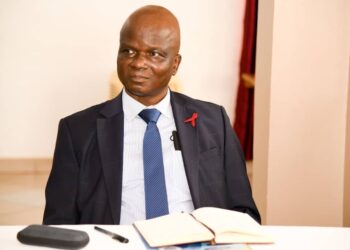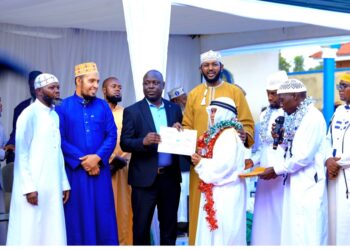Priscilla Namwanje, a Ugandan architect has scooped the top Next Generation Award for Middle East Africa in the global competitive LafargeHolcim Foundation Next Generation awards bringing home the top prize of USD25,000 (approximately Shs88m). Thousands of architects, engineers and construction experts compete for the award. Namwanje beat off competition from across Middle East and Africa.
Namwanje studied architecture at Makerere University and is currently pursuing a Master of Science in Architecture, Urbanism and Building Sciences at the Technische Universiteit Delft in Netherlands. She went to Gayaza High School for her secondary education.
LafargeHolcim is the world’s largest cement company and owns the Hima Cement brand in Uganda.
The annual award started in 2003 by the Lafarge Holcim Foundation. A panel of eminent architects from business and academics go through the entries to select the top four winners. The second winner takes home USD20,000, while the third gets USD15,000 and the fourth takes home USD10,000.
The LafargeHolcim Awards are the world’s most significant competition for sustainable design. The Next Generation category recognizes the visionary concepts and bold ideas of young professionals and students. In the competition region of Middle East Africa, the jury selected four entries to receive Next Generation prizes. The winning projects from Uganda, Jordan, Sierra Leone, and Iraq have one thing in common: an intrinsic optimism about the future.
Uganda’s capital Kampala is highly fragmented territorially, socially, and economically. Architect Priscilla Namwanje’s project intends to bridge gaps in the Muyenga-Namuwongo neighborhood. Thus, between the two very different areas separated by a road, new connections and a network of public spaces are to be created: bridges, jogging trails, a marketplace, a train station, urban gardens, and cultural and recreational facilities.
Her concept seeks to transform Namuwongo from a gray locality into a green social neighborhood. Walkways would be upgraded and drainage channels doubled to help mitigate flooding. The local community would be involved in the implementation of each step of the project.
“Co-creation is a tool to solve the problem of community fragmentation, not just in the spatial sense but also in terms of policy,” says Namwanje.
According to the statement for the judges, the jury was fascinated by the optimistic approach to transform a highly fragmented district into an attractive environment. The project would improve the infrastructure, strengthen the social cohesion, and could be easily transferred to other places.
“We liked that the project makes a link between an answer that is inherently urban and a highly localized human scale,” says Marilyne Andersen, Professor of Sustainable Construction Technologies at the EPFL Lausanne in Switzerland, who was also one of the judges.
“It shows a deep awareness of how we live and how we want to live,” she added.
Namwanje is the daughter of prominent Rotarians Stephen and Dorothy Mwanje. Stephen Mwanje previously served as Rotary District Governor.
“Winning the award is a vital step for me and validates the need for research and architecture to combine to solve today’s problems,” Namwanje says.
Do you have a story in your community or an opinion to share with us: Email us at editorial@watchdoguganda.com













